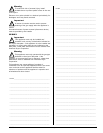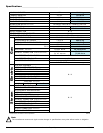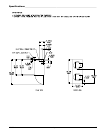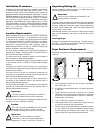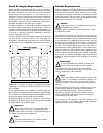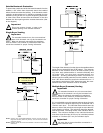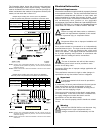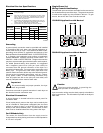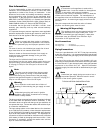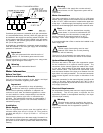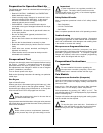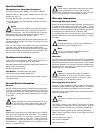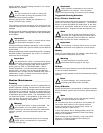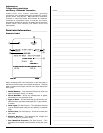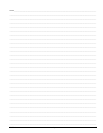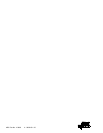
113608-4 www.amdry.com 17
!
!
!
Specify whether the part(s) being returned is for a credit,
replacement, or a refund.
Note
If a part is marked for a credit or a refund, the
invoice number covering the purchase of the
replacement part must be provided.
Warranty tags (Part No. 450064) are available at “no
charge” from ADC upon request.
The company returning the part(s) must clearly note the
complete company name and address on the outside of the
package.
All returns must be properly packaged to ensure that they are
not damaged in transit. Damage claims are the responsibility
of the shipper.
Important
No replacements, credits, or refunds will be issued
for merchandise damaged in transit.
All returns should be shipped to the factory in such a manner
that they are insured and a proof of delivery can be obtained
by the sender.
Shipping charges are not the responsibility of ADC. All returns
should be “prepaid” to the factory. Any “C.O.D.” or “COLLECT”
returns will not be accepted.
Important
No replacements, credits, or refunds will be issued
if the claim cannot be processed due to insufficient
information. The party filing the claim will be notified in
writing, either by “FAX” or “CERTIFIED MAIL – Return
Receipt Requested,” as to the information necessary to
process claim. If a reply is not received by the Warranty
Department within 30 days from the FAX/letter date, then no
replacements, credits, or refunds will be issued, and the
merchandise will be discarded.
Routine Maintenance _________________
Cleaning
A program and/or schedule should be established for
periodic inspection, cleaning, and removal of lint from various
areas of the dryer, as well as throughout the ductwork system.
The frequency of cleaning can best be determined from
experience at each location. Maximum operating efficiency
is dependent upon proper airflow. The accumulation of lint
can restrict this airflow. If the guidelines in this section are
met, the dryer will provide many years of efficient, trouble
free, and most importantly, safe operation.
Warning
Lint from most fabrics is highly combustible. The
accumulation of lint can create a potential fire
hazard. Keep dryer area clear and free from combustible
materials, gasoline, and other flammable vapors and
liquids.
Note
Suggested time intervals shown are for average
usage, which is considered 6 to 8 operational
(running) hours per day.
Important
Dryer produces combustible lint and must be
exhausted to the outdoors. Every 6 months,
inspect the exhaust ducting and remove any lint buildup.
Suggested Cleaning Schedule
Every Third or Fourth Load
Clean the lint screen every third or fourth load. A clogged lint
screen will cause poor dryer performance. The lint door/
drawer is located just below the loading door of the dryer.
Open the lint door/drawer, brush the lint off the lint screen,
and remove the lint. Inspect lint screen and replace if torn.
Note
To remove the lint drawer from the dryer first pull
the screen out roughly half way and lift the clips on
the lower left and right side of the lint drawer up. Now you
will be able to pull the lint drawer completely out.
Important
The frequency of cleaning the lint screen can best
be determined from experience at each location.
Weekly
Clean lint accumulation from lint chamber, thermostat, and
microprocessor temperature sensor area.
Warning
To avoid the hazard of electrical shock,
discontinue electrical supply to the dryer.
90 Days
Remove lint from gas valve burner area with a dusting brush
or vacuum cleaner attachment.
Clean any lint accumulation in and around the motor(s) casing
opening.
Note
To prevent damage, avoid cleaning and/or
touching ignitor/flame-probe assembly.
Every 6 Months
Inspect and remove lint accumulation in customer furnished
exhaust ductwork system and from dryer’s internal exhaust
ducting.
Note
The accumulation of lint in the exhaust ductwork
can create a potential fire hazard.
Do not obstruct the flow of combustion and ventilation air.
Check back draft dampers in the exhaust ductwork.
Inspect and remove any lint accumulation, which can
cause the damper to bind or stick.
A back draft damper that is sticking partially closed can
result in slow drying and shutdown of heat circuit safety
switches or thermostats.
When cleaning the dryer cabinet(s), avoid using harsh
abrasives. A product intended for the cleaning of
appliances is recommended.
!
!
!
!
!
!
!
!



